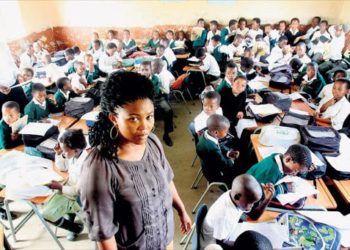Today, education remains an inaccessible right for millions of children around the world. More than 72 million children of primary education age are not in school and 759 million adults are illiterate and do not have the awareness necessary to improve both their living conditions and those of their children.
If you’re a parent, and you’re reading this, this might seem far fetched for you as you enjoy the benefits of a country with a formal developed formal education system and access to funds and qualified teachers, learning and getting a good education is far easier than in a poor country.
Many children in the third world (often used to roughly describe the developing countries of Africa, Asia, and Latin America) face obstacles to accessing quality education. Some are obvious ones — like there being no school to go to — while other challenges are more subtle, like a shortage of teachers or the teacher not having had the training needed to help children learn effectively.
Education is the foundation needed for a country to progress and grow the economy and can promote health amongst the citizens, improve social context and eradicate poverty. According to the United Nations, it is the key ingredient that leads to peace and development.
It’s almost unthinkable that today, with all the tools and resources we have available there are still hundreds of millions of children out of school.
The United Nations is very vocal on the subject and is demanding change from governments and member States, organizations of the UN system, civil society, non-governmental organizations, academic institutions, the private sector, individuals and other relevant stakeholders
So much so that the United Nations General Assembly, on 3 December 2018, proclaimed the 24 January as International Day of Education, as a celebration of the role of education for peace and development.
“Firstly, education is a human right, a public good, and a public responsibility. Secondly, education is the most powerful force in our hands to ensure significant improvements in health, to stimulate economic growth, to unlock the potential and innovation we need to build more resilient and sustainable societies,” said Audrey Azoulay, director-general of UNESCO
We are going to explore the possibilities of EdTech, the internet, and blockchain as agents for change in assisting in achieving the UN’s Sustainable Development Goal – 4 Quality Education for all by 2030.
Achieving this goal by 2030 certainly is a lofty ideal
It’s not often that politicians agree on a subject, but they do agree that for the planet to survive we all need to work together to create a world free of poverty and hunger, where every child can go to school, where the environment will be around for future generations to enjoy, and where everyone is equal.
I’d like to develop some thoughts around some of the greatest challenges in global education and how we can be protagonists for change.
We are going to look at 3 areas that need to be focussed on to initiate change
1. A lack of funding for education
Developing countries often have weak economies and a lack of resources, and rely heavily on foreign aid to help finance the education needs in their borders.
Across the board, it costs an average of $1.25 per day to educate a child. There is currently about a $40B gap in funding to provide quality for all children by 2030. That gap can be closed by developed countries investing 15 cents more per child.
These funds would change the following
- Having no teacher, or having an untrained teacher
- Having no classroom
- A lack of learning materials
- The expense of education
- Using blockchain community currencies as a medium of exchange to eradicate hunger and poor nutrition
2. Gender and disability prejudice
Imagine if being born a girl or having a disability would be the biggest hurdle you have to overcome in order to have a good life. We explore how EdTech and blockchain can create self-sovereignty.
- Being born with the ‘wrong’ gender
- The exclusion of children with disabilities
3. Geographic, location and distance disadvantages
Surely with the way technology has closed the distance gap and allowed humans to connect instantly with other humans around the world, there are workable solutions to the following issues
- Providing education to people living in a country with conflict or at risk of conflict
- Closing the distance from home to school with technology
- Classroom sizes
January 24th, 2019 marks the UN’s International Day of Education. It’s a day to recognize both the progress made in closing the gap in global education and the work that needs to be done to ensure everyone has the opportunity to receive a high-quality education.
But some children have been left behind. How many children are not in school and where are they?









Leave a Reply